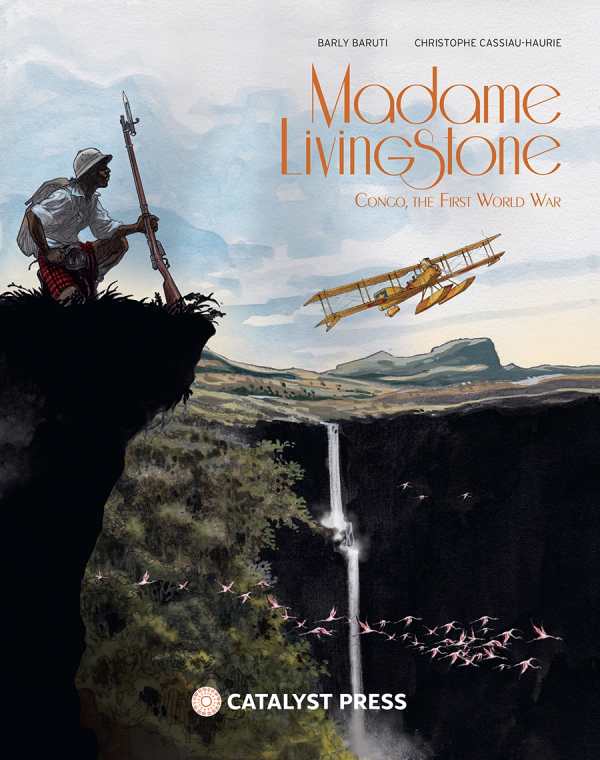Madame Livingstone
The Great War in the Congo
Madame Livingstone uses a World War I conflict in the Congo as the backdrop for an exciting adventure, glimpsing into the country’s history of colonial exploitation.
Based on the efforts of Belgian and Congolese soldiers to drive Germans from Lake Tanganyika, the book focuses on two men: a lieutenant in the Royal Belgian Army, Gaston Mercier, and a “half-breed” Native guide who claims to be the son of the explorer David Livingstone. Called “Madame Livingstone” because of his affinity for wearing a Scottish kilt, the guide is unpredictable but invaluable, speaking several languages and possessing keen insights about how to accomplish the Belgian goal of finding and sinking the German warship Graf Von Goetzen.
Although Livingstone is helpful, Mercier is forced to question his loyalty. A confrontation between the two results in greater understanding about the uncertainty and resentment that Livingstone feels as a man trapped between two colonial powers. As Livingstone says, “This is my country, I go where I like. The borders are your doing.” The book’s conclusion is a thrilling and moving testament to the power of friendship.
Madame Livingstone is a rousing historical tale. Its excellent, authentic art is attentive to details when picturing boats, airplanes, uniforms, and Congolese clothing and landscapes. A “Studies and Research” section includes sketches, historical documents, photographs, and other information that influenced the story; perhaps most interesting is its explanation of the origins of the titular character, whose story is based within the artist’s own family history.
Reviewed by
Peter Dabbene
Disclosure: This article is not an endorsement, but a review. The publisher of this book provided free copies of the book to have their book reviewed by a professional reviewer. No fee was paid by the publisher for this review. Foreword Reviews only recommends books that we love. Foreword Magazine, Inc. is disclosing this in accordance with the Federal Trade Commission’s 16 CFR, Part 255.

